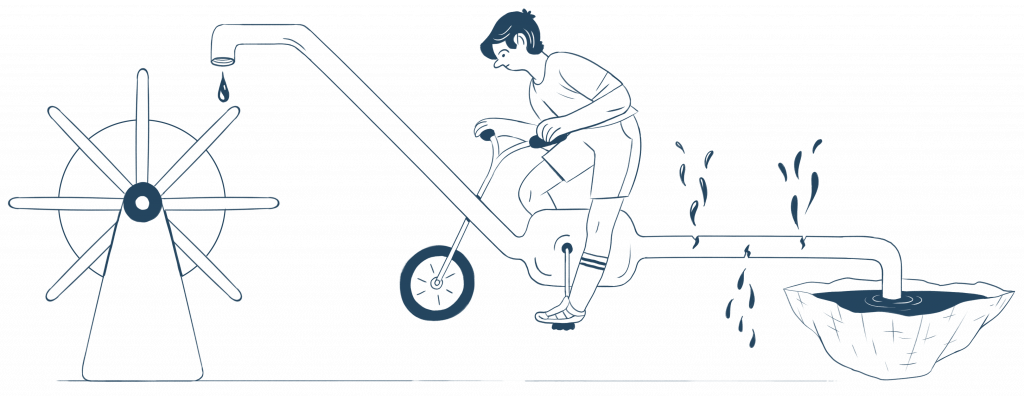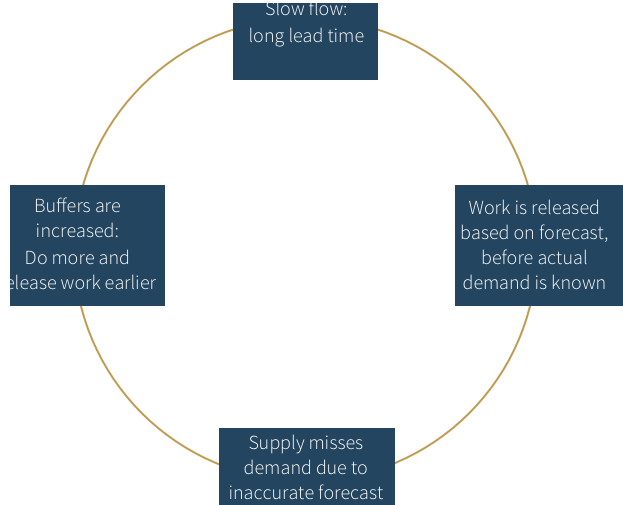We tend to see many separate objectives: output target, due date performance, operating expenses, quality and safety. Many times these objectives seem to have conflicting requirements.
However, when we focus on improving the system’s flow, we are likely to achieve all of the above.
All the perceived conflicts and local
optimizations lose their importance.





